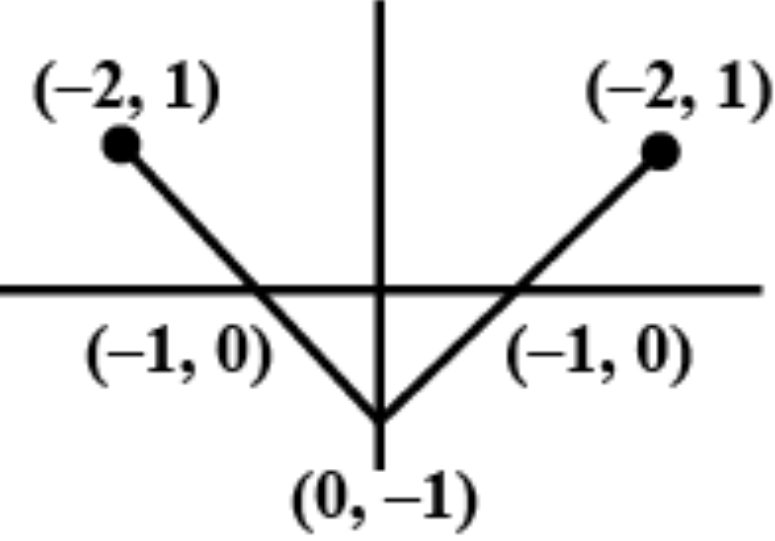Graph the function xy−y−x−2=0.
To graph the function given by the equation xy−y−x−2=0, we will follow these steps:
Step 1: Rearranging the Equation
We start with the equation:
xy−y−x−2=0
We can rearrange this to express y in terms of x:
xy−y=x+2
Factoring out y from the left side gives:
y(x−1)=x+2
Now, we can solve for y:
y=x+2x−1
Step 2: Identifying Asymptotes
The function y=x+2x−1 is a rational function. We need to identify any vertical and horizontal asymptotes.
- Vertical Asymptote: This occurs when the denominator is zero. Setting x−1=0 gives:
x=1
- Horizontal Asymptote: As x approaches infinity, the leading coefficients of the numerator and denominator determine the horizontal asymptote. Here, both the numerator and denominator are of degree 1. Thus, the horizontal asymptote is:
y=11=1
Step 3: Finding Intercepts
Next, we find the intercepts of the graph.
- Y-Intercept: Set x=0:
y=0+20−1=2−1=−2
Thus, the y-intercept is (0,−2).
- X-Intercept: Set y=0:
0=x+2x−1
This occurs when the numerator is zero:
x+2=0⟹x=−2
Thus, the x-intercept is (−2,0).
Step 4: Plotting Points
We can choose a few more values of x to find corresponding y values:
- For x=−1:
y=−1+2−1−1=1−2=−0.5⇒(−1,−0.5)
- For x=2:
y=2+22−1=41=4⇒(2,4)
Step 5: Sketching the Graph
Now we can plot the points:
- Intercepts: (0,−2) and (−2,0)
- Additional points: (−1,−0.5) and (2,4)
- Asymptotes: Vertical line at x=1 and horizontal line at y=1
Step 6: Drawing the Graph
Using the plotted points and asymptotes, we can sketch the graph. The graph will approach the vertical asymptote at x=1 and will approach the horizontal asymptote at y=1.
Summary of the Graph
The graph will consist of two branches:
- One branch in the second quadrant (approaching the asymptotes).
- Another branch in the first quadrant (also approaching the asymptotes).
We start with the equation:
xy−y−x−2=0
We can rearrange this to express y in terms of x:
xy−y=x+2
Factoring out y from the left side gives:
y(x−1)=x+2
Now, we can solve for y:
y=x+2x−1
The function y=x+2x−1 is a rational function. We need to identify any vertical and horizontal asymptotes.
x=1
- Horizontal Asymptote: As x approaches infinity, the leading coefficients of the numerator and denominator determine the horizontal asymptote. Here, both the numerator and denominator are of degree 1. Thus, the horizontal asymptote is:
y=11=1
Next, we find the intercepts of the graph.
y=0+20−1=2−1=−2
Thus, the y-intercept is (0,−2).
0=x+2x−1
This occurs when the numerator is zero:
x+2=0⟹x=−2
Thus, the x-intercept is (−2,0).
We can choose a few more values of x to find corresponding y values:
y=−1+2−1−1=1−2=−0.5⇒(−1,−0.5)
y=2+22−1=41=4⇒(2,4)
Now we can plot the points:
- Intercepts: (0,−2) and (−2,0)
- Additional points: (−1,−0.5) and (2,4)
- Asymptotes: Vertical line at x=1 and horizontal line at y=1
Using the plotted points and asymptotes, we can sketch the graph. The graph will approach the vertical asymptote at x=1 and will approach the horizontal asymptote at y=1.
The graph will consist of two branches:
- One branch in the second quadrant (approaching the asymptotes).
- Another branch in the first quadrant (also approaching the asymptotes).
Topper's Solved these Questions
- RELATIONS AND FUNCTIONSBOOK - ICSECHAPTER - RELATIONS AND FUNCTIONSEXERCISE - EXERCISE 2 (a)
24 Videos
- RELATIONS AND FUNCTIONSBOOK - ICSECHAPTER - RELATIONS AND FUNCTIONSEXERCISE - EXERCISE 2 (b)
26 Videos
- RELATION AND FUNCTIONSBOOK - ICSECHAPTER - RELATION AND FUNCTIONSEXERCISE - MULTIPLE CHOICE QUESTIONS (Choose the correct answer from the given four options in questions)
32 Videos
- SAMPLE QUESTION PAPER 01BOOK - ICSECHAPTER - SAMPLE QUESTION PAPER 01EXERCISE - SECTION C
8 Videos
Similar Questions
The graph of the function y=f(x). Then which of the following curve represent the graph of the function y=|f(x)|

View SolutionDraw the graph of the function y=|x−2|+|x−3|
View SolutionDraw the graph of the function y=|x−2|+|x−3|
View SolutionDraw the graph of the function y=[x] in −2<x<4
View SolutionDraw the graph of function y=|2−|x−2∣∣.
View SolutionGraph function. y=|x+2|+x
View SolutionIf the graph of the function y=f(x) is as shown :

The graph of y=1/2(|f(x)|−f(x)) is
View SolutionIf the graph of the function y=f(x) is as shown :

the graph of y=12(|f(x)|−f(x)) is
View SolutionIf the graph of the function y=f(x) is as shown :

The graph of y=1/2(|f(x)|−f(x)) is
View SolutionProve that value of the function xy(y−x)=2a3 is minimum at x=a.
View Solution
